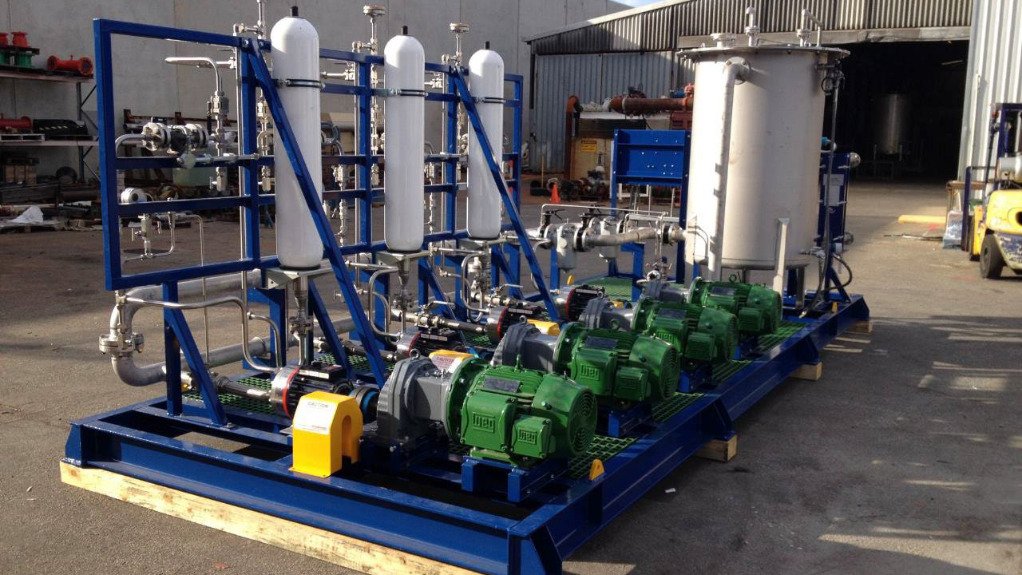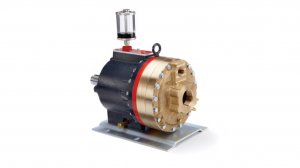Boasting a compact, lightweight seal-less and multiple-diaphragm design that is hydraulically balanced and energy efficient, the hydra-cell pumps offered by pumps and liquid handling products supplier Monitor Pumps & Systems have a versatile fluid compatibility for reliable seal flush applications.
The design allows for easy integration into existing systems, with its lightweight nature facilitating straightforward installation and maintenance.
The advantage of this compact design makes for a smaller pump that can, nonetheless, produce flow/pressure performance equivalent to that of larger pumps, says Monitor Pumps & Systems GM Wim Verhagen.
The hydra-cell pumps boast lower acquisition costs and efficient use of floor space, while the seal-less aspect of the design is fundamental, as it removes the need for dynamic seals and offers several advantages for seal flush applications.
“This design reduces the risk of seal wear, thereby ensuring a longer life for the pump while lowering the potential for leakage – a critical factor when dealing with hazardous or expensive fluids.”
Verhagen adds that the absence of dynamic seals eliminates the need for external lubrication, simplifying the maintenance requirements and reducing operational costs.
In seal flush systems, pulsations can lead to uneven distribution of the flush fluid, potentially compromising the effectiveness of the seal. Consequently, in these applications, maintaining a consistent and controlled flow of the flush fluid to the mechanical seal is crucial for optimal performance.
He notes that the multiple-diaphragm design ensures that the flow will be smooth and free of pulsations, preventing any adverse impact on the mechanical seal.
The design of the hydra-cell pumps also results in less strain on pipes and eliminates the need for expensive pulsation dampeners for most hydra-cell models. This is important for the mechanical seal integrity, as it provides adequate pressure to force clean water into the seal chamber against the internal pressure of the centrifugal pump.
Moreover, Verhagen highlights that the steady pulse-free flow keeps the seal chamber clear of contaminants. The seal-less design also ensures that the performance of the hydra- cell pump will remain consistently high, without declining owing to seal wear.
The hydraulic balance system equalises the pressure on both sides of the diaphragm throughout the operation. This reduces stress on the diaphragm, resulting in an increase in durability.
Flow rate will also be maintained, even as discharge pressure increases, with no overhung load being placed on the shaft bearing, consequently enabling the pump to handle high pressures, with low stress, explains Verhagen.
The hydraulically balanced system reduces stress on the diaphragm and contributes to the pump’s efficiency when handling challenging fluids.
The balanced design will help to maintain the integrity of the diaphragm, even in the presence of abrasive or corrosive materials, which will ensure a sustained performance in demanding operating conditions.
Fluid Compatibility
The versatility of the hydra-cell pump’s fluid compatibility enables it to handle a range of fluids, such as those containing highly abrasive particles, corrosive fluids and fluids containing undissolved solids and particulate matter of up to 800 µm, without the need for fine filtration.
Integrated within the pump’s seal-less design, spring-loaded horizontal disk check valves allow for the processing of abrasive, undissolved particles that would normally damage or destroy other pumps.
Verhagen adds that the design of the pumps enable them to handle not only thin and non- lubricating liquids, but highly viscous liquids as well, which will be pumped reliably.
Verhagen points out: “As part of our ‘Mass Customisation’ philosophy, every hydra-cell pump is built with manifolds, elastomeric materials, and valve assemblies using construction materials specified by the customer.”
This enables Monitor Pumps & Systems to match the flow/ pressure requirements with the best model and materials of construction, based on the process fluid and industry application.
Further, the design contributes to dry run capability as well as reduced friction and energy. This is particularly useful in seal flush systems, where a continuous and reliable operation is essential, and energy efficiency a key factor in reducing operating costs.
The energy efficient operation of the hydra-cell pumps can save between 30% and 50% on initial costs, as they use lower horsepower motors to achieve the same flow rates and pressures as other pumps.
The pumps operate at 85% to 90% energy efficiency to reduce operating costs, resulting in lower capital costs, and less maintenance and repairs, Verhagen concludes.
Edited by: Nadine James
Features Deputy Editor
EMAIL THIS ARTICLE SAVE THIS ARTICLE
ARTICLE ENQUIRY
To subscribe email subscriptions@creamermedia.co.za or click here
To advertise email advertising@creamermedia.co.za or click here















